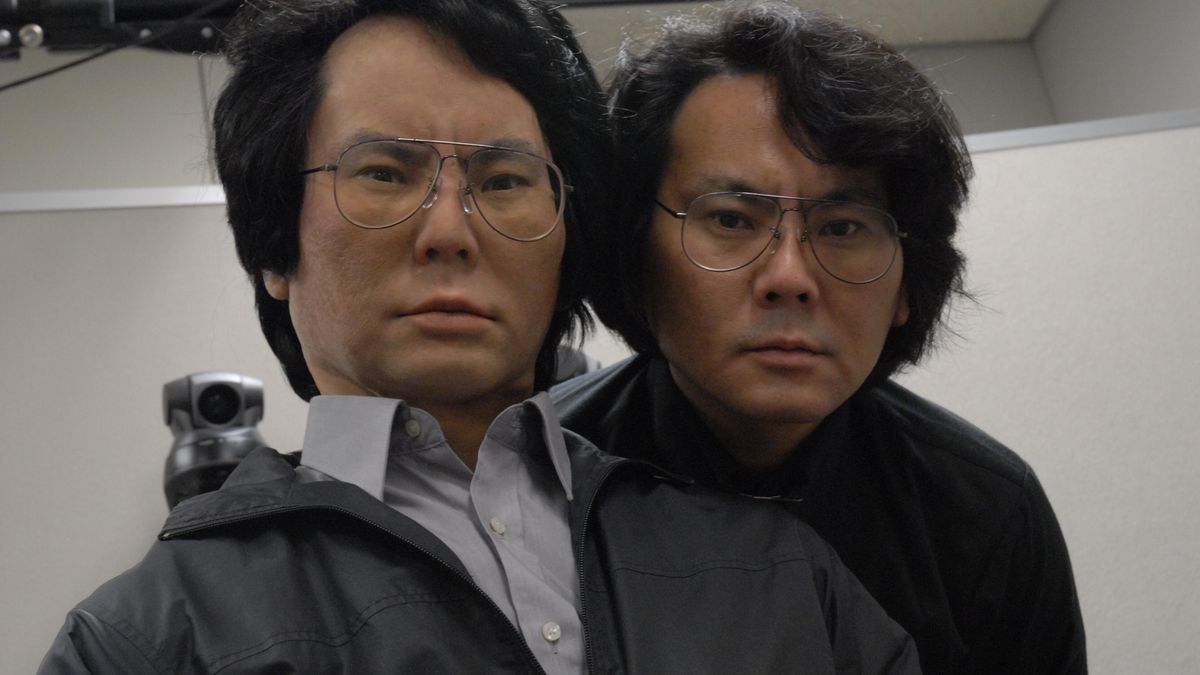In 2016, Jang Ji-sung’s young daughter Nayeon passed away from a blood-related disease. But in February, the South Korean mother was reunited with her daughter in virtual reality. Experts constructed a version of her child using motion capture technology for a documentary. Wearing a VR headset and haptic gloves, Jang was able to walk, talk and play with this digital version of her daughter.
“Maybe it’s a real paradise,” Jang said of the moment the two met in VR. “I met Nayeon, who called me with a smile, for a very short time, but it’s a very happy time. I think I’ve had the dream I’ve always wanted.”
Once largely the concern of science fiction, more people are now interested in immortality — whether that’s keeping your body or mind alive forever (as explored in the new Amazon Prime comedy Upload), or in creating some kind of living memorial, like an AI-based robot or chatbot version of yourself, or of your loved one. The question is — should we do that? And if we do, what should it look like?
In Korea, a mother was reunited with a virtual reality version of her young daughter who had passed away years before, as part of a documentary project.
MBCModern interest around immortality started in the 1960s, when the idea of cryonics emerged — freezing and storing a human corpse or head with the hope of resurrecting that person in the distant future. (While some people have chosen to freeze their body after death, none have yet been revived.)
“There was a shift in death science at that time, and the idea that somehow or another death is something humans can defeat,” said John Troyer, director of the Centre for Death and Society at the University of Bath and author of Technologies of the Human Corpse.
However, no peer-reviewed research suggests it’s worth pouring millions of dollars into trying to upload our brains, or finding ways to keep our bodies alive, Troyer said. At least not yet. A 2016 study published in the journal PLOS ONE did find that exposing a preserved brain to chemical and electrical probes could make the brain function again, to some degree.
“It’s all a gamble about what’s possible in the future,” Troyer said. “I’m just not convinced it’s possible in the way [technology companies] are describing, or desirable.”
The Black Mirror effect
There’s a big difference between people actively trying to upload their brain to try and live on forever and those who die whose relatives or the public try to resurrect them in some way through technology.
In 2015, Eugenia Kuyda, co-founder and CEO of software company Replika, lost her best friend Roman after he was hit by a car in Moscow. As part of the grieving process, she turned to tech. Kuyda trained a chatbot on thousands of text messages the two had shared over the years — creating a digital version of Roman that could still “talk” to family and friends.
The first time she messaged the bot, Kuyda said she was surprised at how close it came to feeling like she was talking to her friend again. “It was very emotional,” she said. “I wasn’t expecting to feel like that, because I worked on that chatbot, I knew how it was built.”
Eugenia Kuyda created a chatbot based on text messages from her friend Roman after he passed away in a car accident.
Eugenia KuydaIf this sounds like an episode of Black Mirror, it’s because it was. The 2013 episode Be Right Back centers on a young woman whose boyfriend is killed in a car accident. In mourning, she signs up for a service that allows her to communicate with an AI version of him based on his past online communications and social media profiles — ultimately turning it into an android version of her boyfriend. But he’s never exactly the same.
However, Kuyda says her Roman chatbot was a deeply personal project and tribute — not a service for others. Anyone trying to do this on a mass scale would run into a number of barriers, she added. You’d have to decide what information would be considered public or private and who the chatbot would be talking to. The way you talk to your parents is different from the way you’d talk to your friends, or to a colleague. There wouldn’t be a way to differentiate, she said.
The digital version of your friend could potentially copy the way they speak, but it wou

